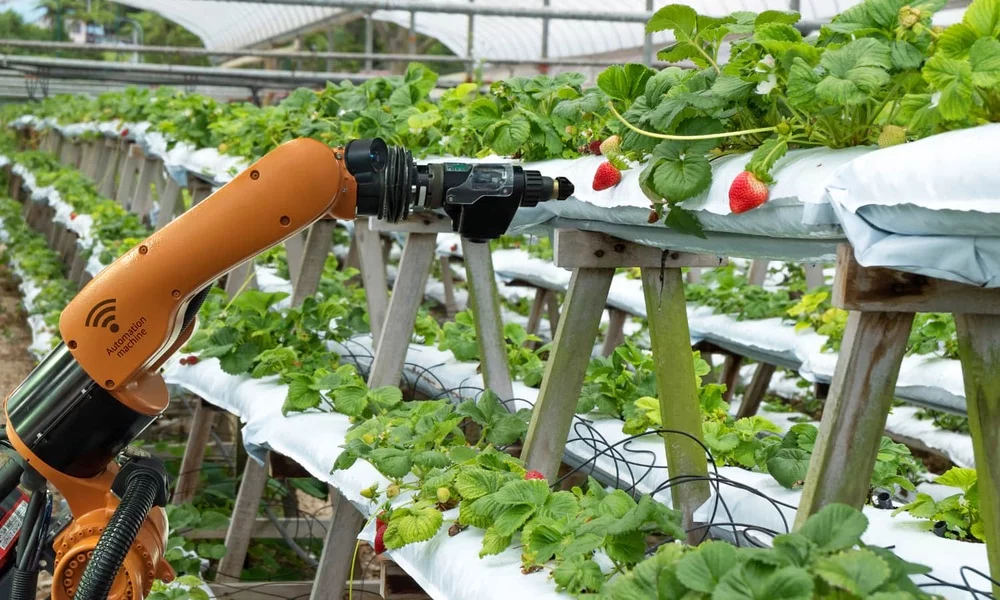Food, we all need it. We all depend on it. Whole cultures revolve around food and it defines their identity. But what about modern food production and how we feed billions of people, every day?
In this article, I look into food technology and how we're using big data robots, pure air and electricity, and a whole range of Petri dishes to secure our daily food production and making it even more delicious.
Challenges
In 2018 there were roughly 113 million people experiencing acute food insecurity in 53 countries. This means these people don't know where their next meal is coming from. And the surprising thing is that the world currently produces more than enough food to feed everyone. Yeah, everyone.
While we, as humans, don't have a food shortage, we are losing biodiversity. Currently only 12 crops make up 75% of all the calories that we eat. And if a pest comes along, that targets any of those or a change in our climate wipes out any of them, we have a real problem.
The world's supply of fresh water is not infinite. And on top, the demand for water is expected to grow massively until at least 2050. 70% of our current water supply is used for agriculture. And that segment will grow 69% by 2035 to support the estimated world population growth. That is a lot of water.
Current technology
Want to start with technology in agriculture. Now take the Western Australia company Wide Open Agriculture as an example. They use hydroponics as well as drip irrigation, which uses a mere 10% of the water used for traditional irrigation. They grow the crops in a 5,400 square meter indoor facility where walls and roof can open and close automatically to reduce water loss.
This type of farming requires no soil or natural sunlight. Instead, plants are grown in trays containing nutrient rich water and encouraged to photo synthesis, photo thing to, photosynthesis by low energy LEDs.
Let's talk about food grown in a lab. A company outside of Helsinki in Finland is creating food in a lab. Real edible food made from nothing but bacteria and water. The company is called Solar Foods and currently they are creating a flour. This flour can be tweaked by the mad scientist and in the not very distant future. When the bacteria has been modified, they will create the specific proteins needed for lab-grown, meat, milk, and eggs, and even fish in the lab.
The use of cloud computing has meant that the immense calculations and algorithms needed to make food and lab has not been an obstacle for solar foods. In fact, they claim they have created a revolutionary way to produce natural protein by using renewable electricity and air and cloud obviously.
Created by a Danish company, Vestergaard Frandsen, the LifeStraw is a remarkably simple invention. A plastic tube with a hollow fiber membrane filters water, as it passes through. The LifeStraw removes bacteria and in general, 99.999% of waterborne parasites.
Technology is also tackling food waste Dutch company, NoFoodWasted partners with supermarkets to alert shoppers when items about to expire, are being marked down. It's a win for shoppers who get cheaper produce, and it's a win for stores that reduced their food wastage by up to 25%. In general, there are a lot of apps that aim to find a mouth for unwanted food.
Future Technology
So I want to start with the cloud. Cloud computing is providing everyone with internet access. That is a way to leverage huge computing resources. It is widely accepted that big data can provide insight into every link in the supply chain from field to fork. For example, big data has already revealed that in developing economies, 32% loss occurs during food production simply because the technology is not there to get maximum efficiency. If we can halve that, just half it, the world could feed a billion, more people.
Using technology to improve areas such as climate forecasting demand planning and the management of end of life product could bring enormous social economic and environmental benefits.
Do you like a perfect burger? The future might be one with burger flipping robots. Such as Flippy. California based burger chain, Cali burger is using the world's first autonomous kitchen assistant. Flippy doesn't burn the patty, doesn't need breaks and can allow staff to focus on serving customers. We'll also see robotic baristas, pizza delivery, robots, bartender robots, and in general, a lot more AI and robotic help when it comes to food production and food delivery.
One of the stranger ideas in future food technology is to print our food. Yes, use a 3D printer to print your candy, print your pizza, print your steak! Hershey's the world's second largest chocolate producer is looking into printing their products too. And NASA is looking into using 3D printed food on space voyages.
Now The Foodini is a 3D printer designed for the home kitchen. The user prepares the ingredients with a food processor and blender and the 3d printer can print shapes out of the mix. The Foodini has created food items, such as burgers, pizza, general junk food...
Twho Australian companies, Heuros in Brisbane and Vow. VOW in Sydney, aiming to make meat grown from animal STEM cells in a laboratory, a commercial reality. A burger patty currently cost around $30 to $40, which really isn't viable. However, Bill Gates and Richard Branson have both invested in companies that produce what is known as clean meat. Which should give some weight to the viability of this sort of farmless farming.
We have real challenges getting on top of both our food production and our fresh water shortage. Technology is here to help for sure, but it is only as useful as the people driving it, creating pizzas in a lab, 3D printing lasagna, and improving soil fertility with IoT devices and big data are just, some of the ways of the future.


Comments (1)